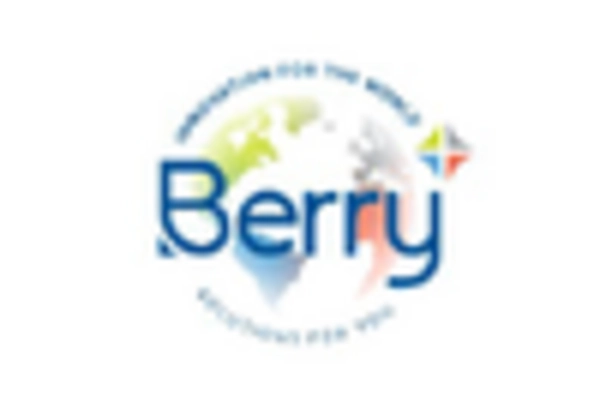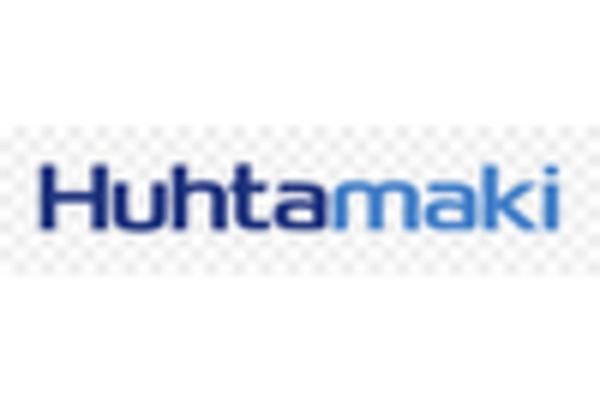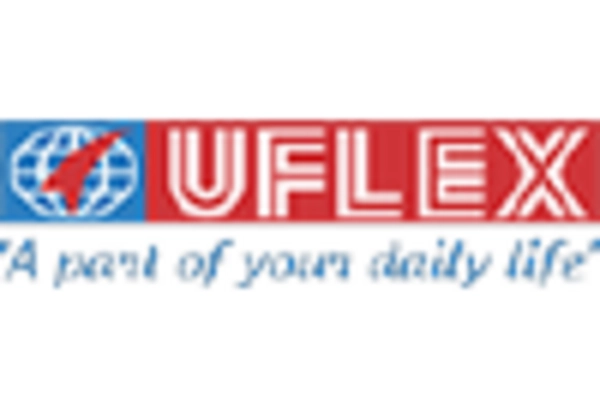Growth in the E-commerce Sector
The rapid expansion of the e-commerce sector in India significantly influences the flexible packaging market. With online shopping becoming a preferred method for consumers, the demand for packaging that ensures product safety during transit is paramount. The flexible packaging market is poised to capitalize on this trend, as it provides lightweight and protective packaging solutions that cater to the needs of e-commerce businesses. Reports indicate that the e-commerce market in India is expected to reach $200 billion by 2026, further driving the need for innovative packaging solutions. As online retailers seek to enhance customer experience, the flexible packaging market is likely to see increased adoption of its products.
Rising Demand for Convenience Foods
The flexible packaging market in India experiences a notable surge in demand for convenience foods, driven by changing consumer lifestyles and preferences. As urbanization accelerates, more consumers seek ready-to-eat and on-the-go meal options. This trend is reflected in the food sector, where the market for convenience foods is projected to grow at a CAGR of approximately 10% over the next five years. Flexible packaging offers the necessary attributes, such as lightweight, durability, and extended shelf life, making it an ideal choice for manufacturers. Consequently, the flexible packaging market is likely to benefit from this shift, as food producers increasingly adopt flexible packaging solutions to meet consumer expectations for convenience and quality.
Technological Innovations in Packaging
Technological advancements play a crucial role in shaping the flexible packaging market in India. Innovations such as smart packaging, which incorporates sensors and QR codes, enhance product tracking and consumer engagement. These technologies are becoming increasingly relevant as manufacturers seek to differentiate their products in a competitive market. The flexible packaging market is likely to benefit from these innovations, as they improve functionality and consumer interaction. Furthermore, advancements in printing technology allow for high-quality graphics and customization, appealing to brand-conscious consumers. As the market evolves, the integration of technology into flexible packaging solutions is expected to drive growth, with an estimated increase of 12% in market value over the next five years.
Rising Health Consciousness Among Consumers
The flexible packaging market in India is also influenced by the growing health consciousness among consumers. As individuals become more aware of nutrition and wellness, there is an increasing demand for packaging that preserves the freshness and quality of health-oriented products. This trend is particularly evident in sectors such as organic foods and dietary supplements, where packaging plays a vital role in maintaining product integrity. The flexible packaging market is well-positioned to cater to this demand, as it offers solutions that extend shelf life and ensure product safety. With the health food market projected to grow at a CAGR of 15% in the coming years, the flexible packaging market is likely to see a corresponding increase in demand for its innovative packaging solutions.
Regulatory Support for Sustainable Practices
The flexible packaging market in India is witnessing a shift towards sustainable practices, supported by government regulations aimed at reducing plastic waste. The Indian government has introduced various initiatives to promote eco-friendly packaging solutions, which encourages manufacturers to adopt flexible packaging that is recyclable or biodegradable. This regulatory support is expected to drive innovation within the flexible packaging market, as companies invest in developing sustainable materials. As a result, the market could see a significant transformation, with an anticipated growth rate of 8% in the adoption of sustainable packaging solutions over the next few years. This trend not only aligns with global sustainability goals but also meets the increasing consumer demand for environmentally responsible products.

















Leave a Comment